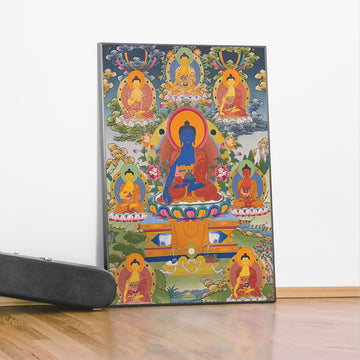Yamantaka thangka is a traditional Tibetan Buddhist art form that depicts the deity Yamantaka, also known as the "Slayer of Death." The deity is believed to be an embodiment of the compassion and wisdom of all the buddhas, and is often depicted with a fierce appearance, adorned with various weapons and ornaments. In this article, we will explore everything you need to know about Yamantaka thangka, including its symbolism and cultural significance.
Symbolism
In Tibetan Buddhism, Yamantaka is seen as a protector against the fear of death, and is often invoked for assistance in overcoming physical and mental suffering. He is also seen as a powerful protector against negative influences and obstacles, and is believed to be able to help those who invoke his name to overcome difficulties and achieve their goals.
In Tibetan iconography, Yamantaka is often depicted with a body made up of a variety of animals, including a buffalo, elephant, and horse. He is also shown with a pair of buffalo horns and a pair of elephant tusks, as well as a variety of weapons, including a sword, trident, and vajra. These symbols represent the deity's power and ability to overcome obstacles and defeat negative influences.
Cultural Significance
In Tibetan culture, thangka paintings are highly valued for their spiritual and cultural significance. They are often used as aids in meditation and ritual practices, and are believed to have the power to bring blessings and protection to those who view them.
Thangka paintings are also important cultural artifacts, representing the rich artistic and spiritual traditions of Tibetan Buddhism. As such, they are often displayed in temples and monasteries, and are also collected by art collectors and enthusiasts around the world.
Conclusion
Yamantaka thangka is a traditional Tibetan Buddhist art form that depicts the deity Yamantaka, also known as the "Slayer of Death." The deity is believed to be an embodiment of the compassion and wisdom of all the buddhas, and is often depicted with a fierce appearance, adorned with various weapons and ornaments. Thangka paintings are highly valued for their spiritual and cultural significance, and are used as aids in meditation and ritual practices. They are also important cultural artifacts, representing the rich artistic and spiritual traditions of Tibetan Buddhism.





